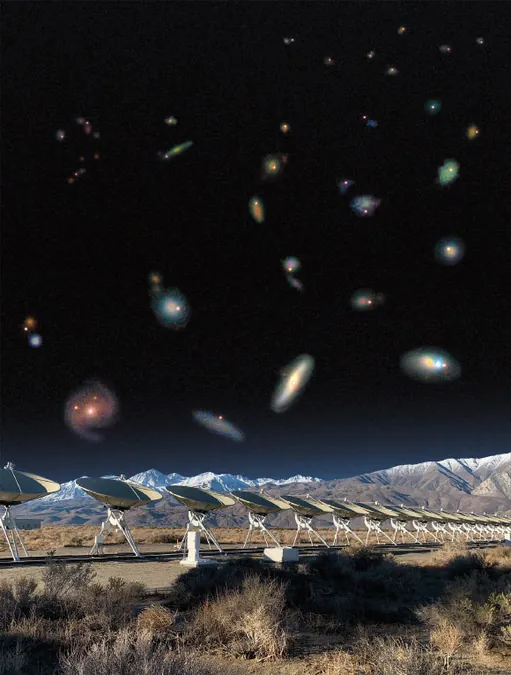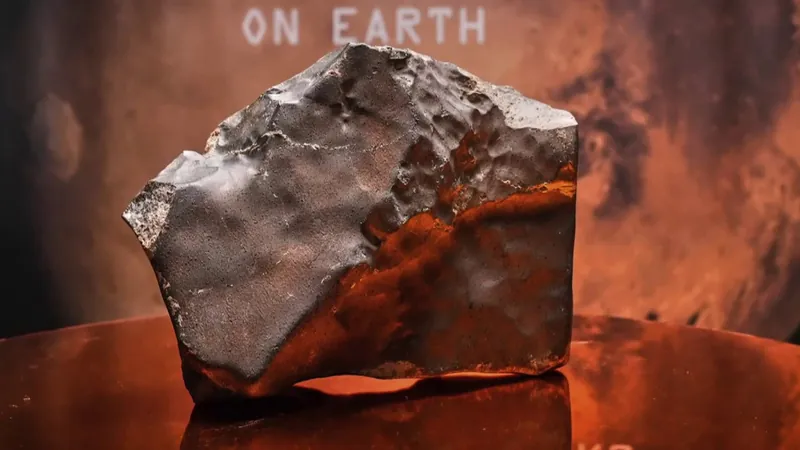
Incredible Discovery: Fast Radio Bursts Linked to Massive, Star-Forming Galaxies!
2024-11-06
Author: Sophie
Incredible Discovery: Fast Radio Bursts Linked to Massive, Star-Forming Galaxies!
Fast Radio Bursts (FRBs) have been captivating astronomers with their brief yet powerful emissions detected from beyond our own Milky Way Galaxy. Recent groundbreaking research indicates a strong connection between these enigmatic bursts and massive star-forming galaxies. Despite the intense focus on understanding FRBs, the exact processes that produce these cosmic signals remain shrouded in mystery.
Lead author Kritti Sharma, a graduate student at Caltech, points to magnetars—neutron stars with magnetic fields that are 100 trillion times more powerful than that of Earth—as the likely culprits behind FRBs. This conclusion is supported by previously observed FRB-like bursts originating from a magnetar within our own galaxy.
The research team utilized the Deep Synoptic Array-110 (DSA-110) at the Owens Valley Radio Observatory in California to make their discoveries. Remarkably, they managed to detect and localize 70 FRBs to their respective host galaxies, a significant feat compared to only 23 FRBs localized by other observatories.
In analyzing 30 of these localized FRBs, the researchers made an intriguing finding: these bursts are predominantly found in massive, metal-rich galaxies. This revelation contradicts prior assumptions that FRBs were evenly distributed across various types of star-forming galaxies. Dr. Vikram Ravi from Caltech noted that DSA-110 has essentially doubled the number of FRBs linked to known host galaxies, confirming the value of their work.
The research highlights that massive galaxies generally contain higher concentrations of metals—elements produced by the stars themselves over cosmic time. The prevalence of FRBs in these metal-rich environments suggests that magnetars are also more common in such galaxies. The stars enriched in metals tend to grow larger, and significantly, around 84% of massive stars exist in binary systems. When one of these stars becomes engorged due to excess material, it can transfer mass to its companion, leading to a merger. This merger could potentially create a new star with an even stronger magnetic field, likely resulting in the formation of a magnetar, which is thought to trigger FRBs.
This discovery opens up new avenues for understanding the role of stellar mergers in shaping the cosmos, as it indicates that FRBs could originate from the remnants of such extreme stellar interactions across the universe.
Looking ahead, Sharma and her team are eager to uncover more FRBs and determine their origins using the DSA-110 and the anticipated DSA-2000—an even larger radio array projected for completion in 2028 in the Nevada desert. As Dr. Ravi remarked, the success of the DSA-110 in localizing FRBs holds great promise for the future endeavors of the research team.
The findings, published in the prestigious journal Nature, signify a remarkable leap in our understanding of FRBs and their association with massive star-forming galaxies, placing astronomers one step closer to unraveling the mysteries of the universe. The journey continues, and who knows what shocking discoveries await as we peer deeper into the cosmos? Stay tuned!









 Brasil (PT)
Brasil (PT)
 Canada (EN)
Canada (EN)
 Chile (ES)
Chile (ES)
 Česko (CS)
Česko (CS)
 대한민국 (KO)
대한민국 (KO)
 España (ES)
España (ES)
 France (FR)
France (FR)
 Hong Kong (EN)
Hong Kong (EN)
 Italia (IT)
Italia (IT)
 日本 (JA)
日本 (JA)
 Magyarország (HU)
Magyarország (HU)
 Norge (NO)
Norge (NO)
 Polska (PL)
Polska (PL)
 Schweiz (DE)
Schweiz (DE)
 Singapore (EN)
Singapore (EN)
 Sverige (SV)
Sverige (SV)
 Suomi (FI)
Suomi (FI)
 Türkiye (TR)
Türkiye (TR)
 الإمارات العربية المتحدة (AR)
الإمارات العربية المتحدة (AR)